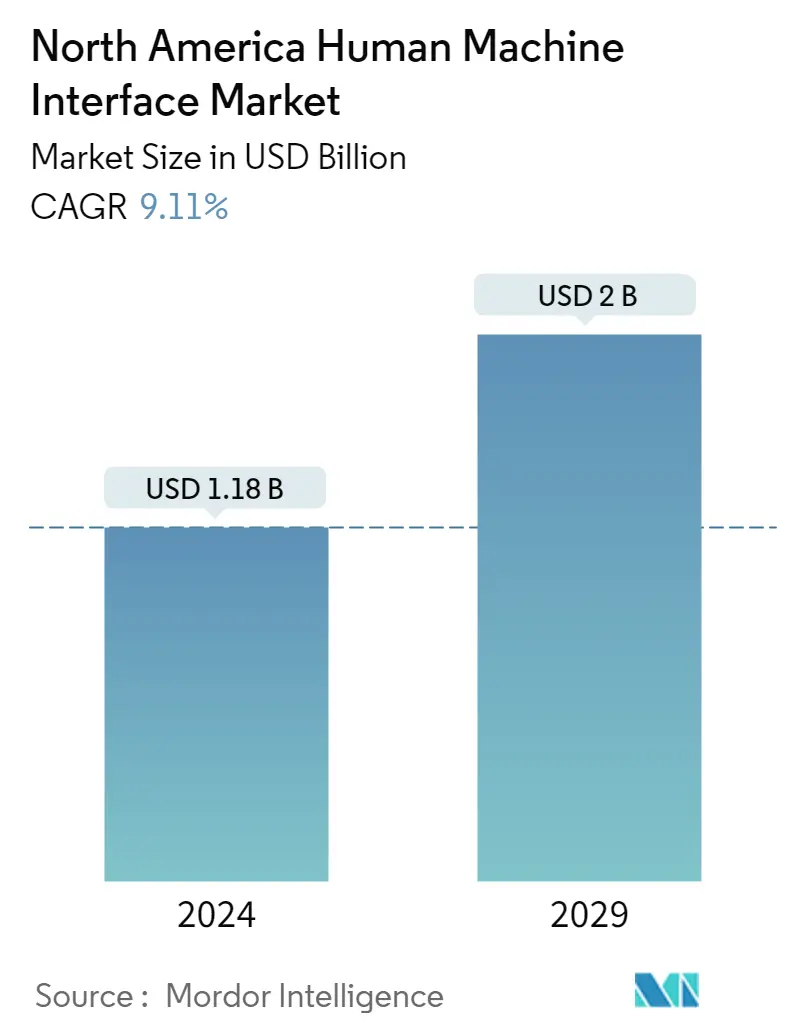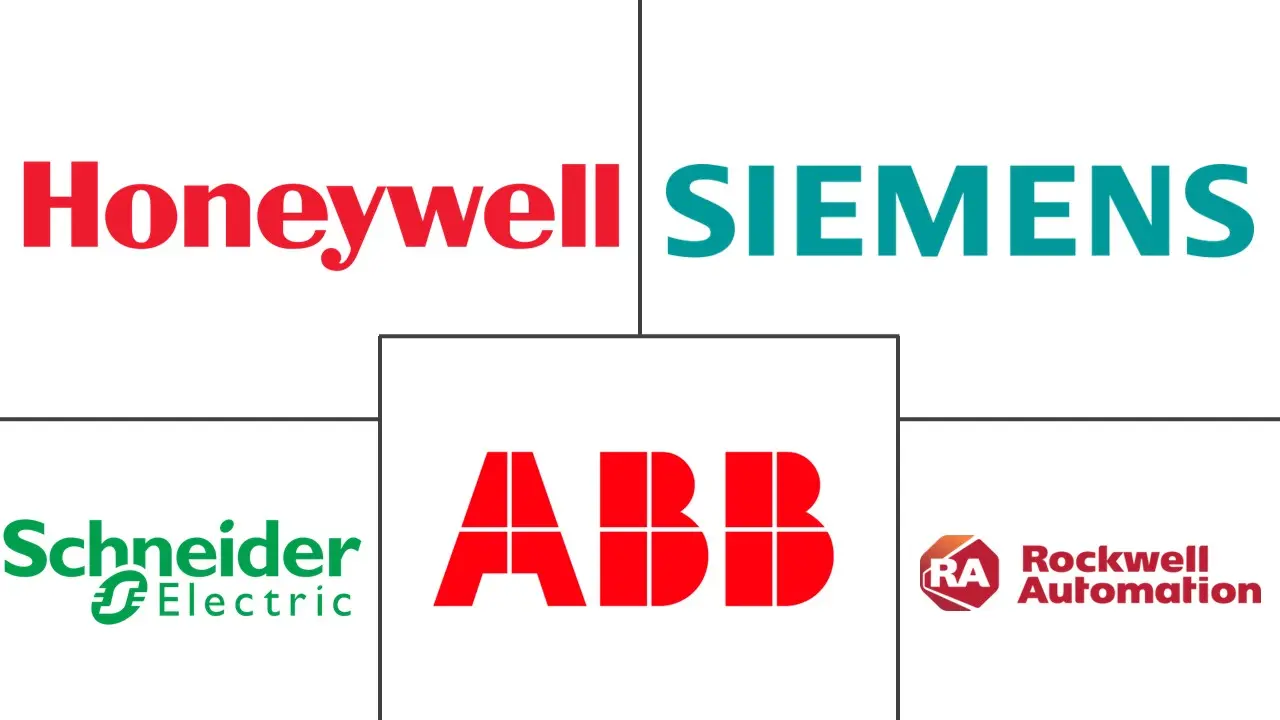Market Size of North America Human Machine Interface Industry

| Study Period | 2019 - 2029 |
| Base Year For Estimation | 2023 |
| Market Size (2024) | USD 1.18 Billion |
| Market Size (2029) | USD 2.00 Billion |
| CAGR (2024 - 2029) | 9.11 % |
| Market Concentration | Low |
Major Players
*Disclaimer: Major Players sorted in no particular order |
Need a report that reflects how COVID-19 has impacted this market and its growth?
North America Human Machine Interface Market Analysis
The North America Human Machine Interface Market size is estimated at USD 1.18 billion in 2024, and is expected to reach USD 2 billion by 2029, growing at a CAGR of 9.11% during the forecast period (2024-2029).
The key factor contributing to the growth of the market is the increasing adoption of industrial automation across the manufacturing sector. Moreover, other factors, such as the growing demand for smart automation solutions, advancements in the Industrial Internet of Things (IIoT) technology, and the surging need to monitor and increase the efficiency of manufacturing units, are also significantly contributing to the growth of the market.
- The manufacturers in the region are considered to be one of the most fervent adopters of Industry 4.0. The operational benefits of advanced technologies, such as IoT and big data, have made North American manufacturers more inclined to integrate IoT technologies into their processes. Moreover, the growing number of small and medium enterprises (SMEs) in the region and increasing digitization in manufacturing by various large organizations have also propelled the growth of the IoT in the regional manufacturing market. Therefore, the increasing efforts of the companies in the region to move towards Industry 4.0 operations are expected to propel the demand in the region.
- Demand for automating the industrial process has seen a steady increase. The market has seen significant growth in automation industries, facilitating the demand for Human Machine Interface (HMI) products. HMI helps increase the efficiency of the user and secures the data. The initial high cost associated with deploying such products acts as a challenge to the market's growth. Besides, HMIs are not limited to manufacturing enterprises. It is increasingly used by various enterprises operating in industry verticals like energy, healthcare, and defense.
- Human-machine interfaces communicate with Programmable Logic Controllers (PLCs) and input/output sensors for obtaining and displaying information for the users to view. The HMI screens can be used for tracking and monitoring or performing other operations, such as controlling the machines.
- Previously, operators were required to walk the floor constantly to review mechanical progress and record it on a whiteboard or a paper for future reference. By allowing PLCs to transmit real-time information straight on an HMI display, the HMI technology significantly eliminates the need for this manual and outdated practice, reducing several problems caused by lack of information or human error.
- Further, HMIs optimize an industrial process as it allows digitization and centralization of data for a viewer. By leveraging HMI, operators can see crucial information and data displayed in charts, graphs, or digital dashboards. Further, it allows them to view and manage alarms and connect with MES and SCADA systems, all through one console.
- The COVID-19 pandemic initially slowed down the human-machine interface (HMI) market in North America due to disruptions in supply chains and reduced industrial activities. However, the need for touchless interfaces and automation solutions subsequently drove demand for HMIs, particularly in sectors like healthcare, manufacturing, and retail. This led to a shift towards more advanced technologies, such as gesture recognition and voice control, to ensure safer interactions.
